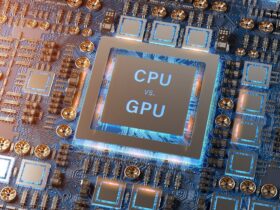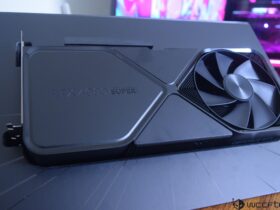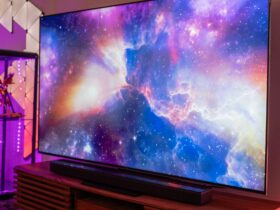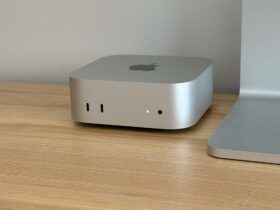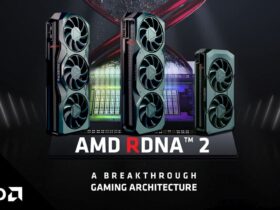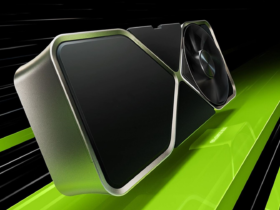Daftar Isi
The world of gaming and content creation hinges on the relentless pursuit of better graphics. As enthusiasts eagerly await the next generation of GPUs, NVIDIA’s RTX 5000 Blackwell flagship emerges as a beacon of promise. With rumors swirling about its performance, memory interface, and potential impact, let’s delve into what makes the NVIDIA RTX 5000 a game-changer.
The NVIDIA RTX 5000 Blackwell: Unleashing the Beast
Performance Expectations
The NVIDIA RTX 5000 Blackwell, likely to be named the GeForce RTX 5090, promises a seismic leap in performance. Leaks suggest that it could be 60% to 70% faster than its predecessor, the RTX 4090. But how does it achieve this remarkable boost?
Core Count and Cache
NVIDIA’s latest graphics card, the RTX 5090, promises a significant leap in performance and capabilities compared to its predecessor, the RTX 4090. One of the standout features of the RTX 5090 is its impressive core count, boasting a staggering 50% increase in CUDA cores over the RTX 4090.
These additional CUDA cores serve as the backbone of the GPU’s raw computational power, delivering enhanced gaming experiences, smoother frame rates, and accelerated rendering speeds. Whether you’re diving into the latest AAA titles or tackling demanding creative projects, the RTX 5090’s expanded core count ensures that your graphics-intensive tasks are handled with ease and efficiency.
Subtantial L2 Cache Increase
In addition to the boost in core count, the RTX 5090 also introduces a substantial increase in L2 cache, with a remarkable 78% expansion compared to its predecessor. This expanded cache capacity plays a crucial role in optimizing data access, effectively reducing potential bottlenecks and enhancing overall system responsiveness.
With these advancements in core count and cache size, the RTX 5090 sets a new standard for high-performance computing and immersive gaming experiences. Whether you’re a dedicated gamer, content creator, or professional user, the RTX 5090 represents a compelling choice for those seeking unparalleled graphics performance and productivity capabilities.
Read More: PC GPU Shipment Increase in Last Quarter
Memory Interface
The gaming world is abuzz with excitement as rumors circulate about the upcoming NVIDIA RTX 5090 graphics card. Among the most anticipated upgrades is the remarkable enhancement to its memory interface, poised to elevate gaming experiences to unprecedented heights.
Unlike its predecessor, the RTX 4090, which featured a respectable 24 GB 384-bit memory interface, the RTX 5090 is rumored to make a bold leap to an impressive 512-bit bus. This significant shift in memory interface size holds the potential to redefine the boundaries of gaming performance and immersion.
Opens Doors to New Possibilities
By expanding the memory interface to a 512-bit bus, the RTX 5090 opens doors to a wealth of possibilities for gamers and content creators alike. With increased memory bandwidth and capacity, users can expect smoother gameplay, enhanced visual fidelity, and unparalleled multitasking capabilities.
Picture rendering lifelike virtual worlds with breathtaking detail, harnessing the power of ray-tracing technology to achieve unparalleled realism, all without sacrificing performance or experiencing bottlenecks. The RTX 5090’s robust memory interface ensures that gamers can push the boundaries of their creativity and immerse themselves in truly captivating gaming experiences.
As the gaming landscape continues to evolve, the RTX 5090 stands poised to set new standards for graphics performance and innovation. Whether you’re a dedicated gamer, a digital artist, or a professional content creator, the NVIDIA RTX 5000 promises to deliver unparalleled power and performance, revolutionizing the way we experience gaming and visual content creation.
The Memory Dilemma
NVIDIA has faced criticism for skimping on VRAM in mid-range products. The RTX 3070 and 4060, for instance, offer a mere 8 GB of memory. The RTX 3060 fares slightly better with 12 GB. As the NVIDIA RTX 5000 series approaches, questions arise: Will the mainstream variant suffer from VRAM limitations? Will it be another 128-bit product? While details remain unconfirmed, the shift to GDDR7 from GDDR6X hints at a more balanced approach.
Conclusion
In conclusion, the NVIDIA RTX 5000 Blackwell flagship represents a quantum leap in GPU technology. Whether you’re a gamer, a creator, or a data scientist, brace yourself for a new era of visual fidelity. As NVIDIA continues to push boundaries, the NVIDIA RTX 5000 stands poised to redefine what’s possible in the world of graphics.








